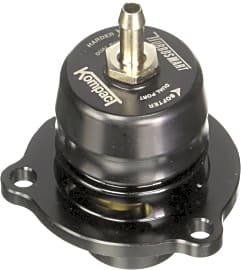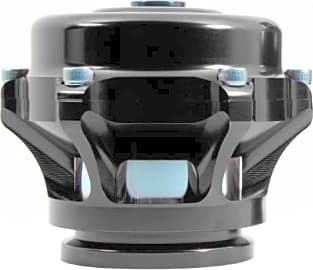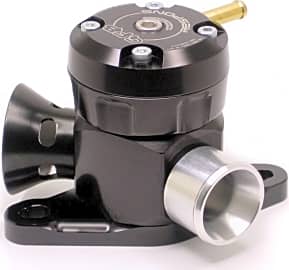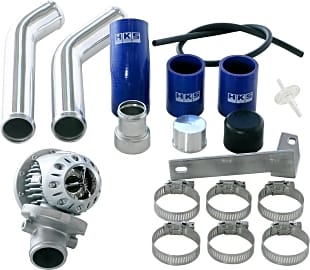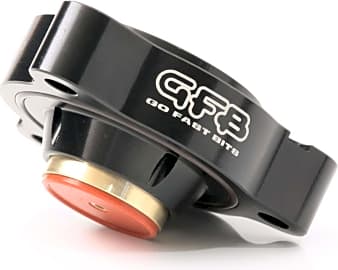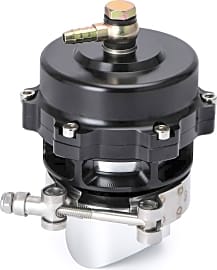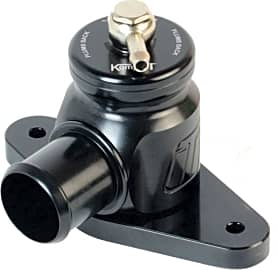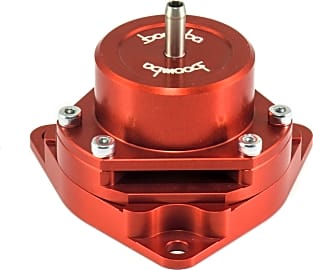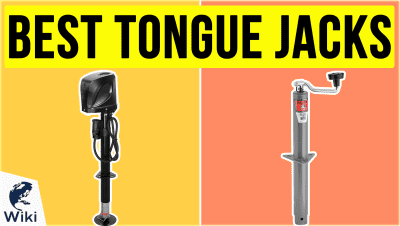The 9 Best Blow Off Valves

This wiki has been updated 34 times since it was first published in October of 2016. If your ride is equipped with a powerful turbo or you're thinking about installing one, then you'll need one of these blow-off valves to help protect it as well as your vehicle from damage due to compressor surge, while also ensuring consistent shifting and acceleration. Consider the loud noise most produce as a safety feature letting other drivers know you're coming. When users buy our independently chosen editorial picks, we may earn commissions to help fund the Wiki.
Editor's Notes
March 30, 2021:
Little has changed recently in the world of hooter valves, although it is harder to get your hands on the HKS Super Sequential. Because it's so expensive, we've moved it down a few slots. Aside from removing an off-brand model that's no longer available, the only other major change this time around was the upgrade from the Tial QR to the Tial Q Black. The QR is meant specifically for superchargers, and because turbocharged car owners are far and away more often in search of a BOV, we updated it to the Q Black, which is designed for systems that reach 10 PSI.
February 27, 2020:
I’ve taken out a few of the options that were struggling with availability issues, like the NGR Type-S, Blitz Universal and Sard R2D2, and added a few new options in their place, the first of which was the GFB Plus which uses a pilot-actuated pressure relief system, as opposed to a direct acting relief system. Both systems use springs, but they differ in their operation.
BOV’s (Blow-Off Valves) are either a universal fit or a direct-fit replacement, the latter of type meaning that they’re designed as an aftermarket fit for the valves of certain turbo systems, so in that sense, they serve a limited range of vehicles. Direct replacements are usually easier to install and offer better performance too, since they’re more specialized. With that in mind, I’ve introduced both the Turbosmart Plumb Back and GFB Plus as direct-replacement options, but I’ve also added the Dewhel V-Band as a universal replacement that gives you some more flexibility.
While scholars note an important difference between CBV’s (Compressor Bypass Valves) and BOV’s there is a bit of a grey area, as hybrids like the GFB Respons TMS exist that provide both recirculation and blow-off valves - the former valve relieves pressure by forcing air to recirculate through the system, and the latter valve releases pressure into the atmosphere. The ratio of exhaust between the 2 valves can be adjusted or tuned. TurboMaster, as one of the authorities in the turbo market, consider recirculation valves to be a type of BOV, instead of placing them in a separate category of BPV’s (Bypass Valves) or CBV’s, so I’ve decided to stick by their definition and introduced the Turbosmart Plumb Back as a BOV and not a BPV, even though it offers recirculation; the manufacturer of the valve itself - Turbosmart - also lists this recirculating valve as a BOV and not a BPV in their catalog. The Turbosmart Plumb Back rounds out this list really well, as recirculating valves are significantly quieter than regular BOV’s and they’re more useful for many vehicle systems with mass airflow sensors. The Tial QR is another excellent recirculation valve that was here from before the update.
The Need For Speed
After all, it takes a village to win Le Mans, but there's only one seat in the car.
There's a certain thrill that comes with a powerful motor screaming down the track at breakneck speeds, and if you've ever experienced a high-performance vehicle in action, you've probably tasted that excitement. Whether you're an avid spectator, an aftermarket enthusiast, or a professional racing mechanic, the need for speed is a real drive for many automotive fanatics around the world, and rightly so. Few disciplines blend engineering and athleticism, aerodynamics and explosions, academia and instinct, or teamwork and personal greatness in the ways that fast cars can. After all, it takes a village to win Le Mans, but there's only one seat in the car.
Today's automobiles are responsible for more than just transportation. Many people spend so much time behind the wheel, their car evolves past vehicle status and into personal expression territory. In some ways, a person's car is their most visible outward face, getting even more looks daily than their various social media profiles. For that reason, many go out of their way to make their car look, drive, and sound, if not incredible, then at least memorable.
But Why A Customized Ride?
So, what makes a car reflect positively on its owner? Some people prefer a clean, showroom-floor-perfect luxury chariot with ultra-wet-look tires. Many folks love the bold, striking builds of restored historic classics like '57 Chevys and '69 Camaros, with iconic aesthetics, sounds, and pollution levels long lost to history. Still others love the idea of having a family car — say, a station wagon or minivan — with a bored and blown-out small-block hiding inside, ready to rip the doors off unsuspecting sports-car owners on the highway. That last one's called a "sleeper," and for what it's worth, they're quite fun to drive.
It's safe to say that people who really love to drive might also be interested in the vehicle's mechanics. While there's a short list of common, simple modifications that marginally increase power, there aren't a lot of safe ways to directly increase a car's horsepower (nitrous oxide is not recommended unless you enjoy fried piston rings — which are not a greasy, salty, beer-battered snack). That's why many older gearheads will tell you that there's no replacement for displacement. While there's something to be said for the low-end torque of a Chevy small-block, there's something that is in some ways better than displacement, and it's called boost.
The Basics Of Boosting
Normally, an engine works by compressing the air within a cylinder, adding fuel, igniting it, and harnessing the energy of the explosion. A higher-volume cylinder means more air, which means more oxygen, and can oxidize more fuel, leading to more power. Boost is the concept of forcing additional air into that chamber, effectively simulating a larger cylinder. Atmospheric pressure (or 1 ATM) is 14.7 psi at sea level, but some engines operate 30 psi above that, or more. This is done through forced induction, by components called superchargers and turbochargers.
When the throttle closes suddenly, such as during shifting, the turbine generates extra pressure that has nowhere to go.
Superchargers are driven by a belt affixed to the motor itself, so they provide a consistent boost curve up and down the tachometer. When the throttle is cut and the RPMs drop, the supercharger (also known as a blower) also cuts, and restarts its work when the motor spins up. Turbochargers are considerably more efficient for two reasons. The first is that they operate exclusively on exhaust pressure, which would otherwise turn into useless heat energy. By comparison, belt-driven blowers draw a not-insignificant amount of power from the crankshaft in order to work. Furthermore, turbos only spool under high pressure, so during normal driving you won't experience nearly as much boost as you would under high throttle. Less boost equals less fuel, and the price of gas certainly isn't dropping much.
Turbos consist of two impellers: turbines that power a compressor, which routes boosted air to the intake. One of the issues with this method of aspiration is compressor surge. When the throttle closes suddenly, such as during shifting, the turbine generates extra pressure that has nowhere to go. This stops the compressor from spinning, requiring a complete spool-up once exhaust pressure returns. It can also damage the unit's bearings by putting too much stress on the wrong parts of the impeller. But, never fear, there's a part designed specifically to minimize this, and it's called a blow-off valve.
These valves are inserted between the turbo and throttle plate, and actuate when the throttle is closed. When open, they release that excess pressure from the manifold, preventing dangerous turbo flutter, and allowing the compressor to keep spinning. This mitigates damage, as well as spool-up time after shifting. Some of them, particularly those included in factory-turbocharged cars, recirculate that air back to the intake. Others are more noticeable by venting their pressure straight to the atmosphere, and sometimes at ear-piercing, would-you-look-at-that levels — which happens to be part of the fun.
Even if your vehicle didn't come with a turbocharger straight off the showroom floor, let alone a blow-off valve, it's definitely a useful upgrade to nearly any forced-induction setup. If you're a more modest driver, choosing a recirculating valve will keep you clandestine. Those on the fence about showing off should check out some of the fancier models that have adjustable volume levels as well as sound profiles. And before we're done, it's important to note that, depending on where your mass airflow sensor is located, you may have to work with your ECU upon installation of one of these valves, because the location of the ports can fool the MAF into running especially lean for a few moments after the valves actuates, which can cause detonation at high compression ratios. But as long as you take your time installing it, the right one will keep your turbo safe and spinning, and keep heads on the street turning.


